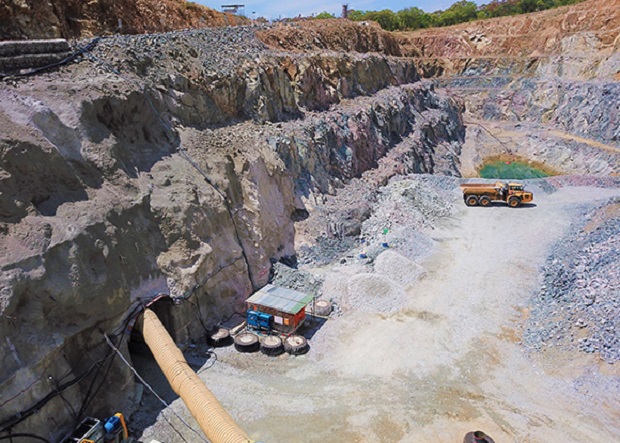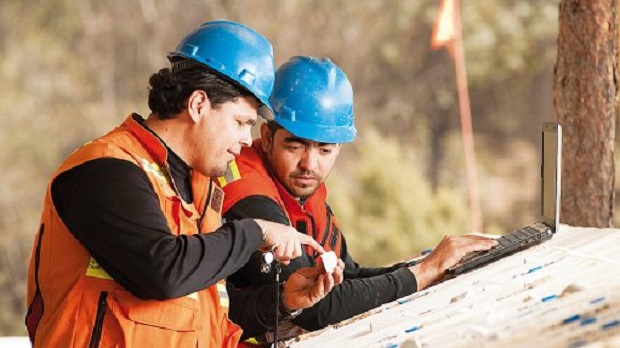La India achieved commercial production on February 1, 2014. Our Pinos Altos and Creston Mascota mine complex is approximately 70 km southeast of La India, providing operating synergy between the two properties.
Key Facts
Mine Type - Open pit
2019 production - 82,190 oz gold
2019 production costs - $799/oz gold
2018 total cash costs - $823/oz gold
Gold reserves - 490,000 oz
2020 production guidance - oz gold
2020 total cash costs guidance - $--/oz gold
Mine life - 4 years
The La India mine is located approximately 200 km east of Hermosillo in Sonora, Mexico. The 629-square-km property includes the La India mine site, the Tarachi gold resource and several other prospective exploration targets, situated in the prolific Mulatos gold belt.
The La India mine hosts proven and probable reserves of 0.5 million ounces of gold and 1.7 million ounces of silver (20 million tonnes of ore grading 0.75 g/t gold and 2.62 g/t silver) as of December 31, 2019. The above total includes the new El Realito Zone, which has probable mineral reserves of 106,000 ounces of gold and 485,000 ounces of silver (4.7 million tonnes grading 0.71 g/t gold and 3.24 g/t silver).
Internal studies are ongoing to evaluate the potential to develop El Realito and other satellite zones such as the Chipriona polymetallic target.
Geology
The La India mine lies within an extensive ancient volcanic field. It is in an area dominated by outcrops of andesitic, dacitic and felsic volcanic tuffs from different explosive volcanic events that were affected by large-scale north-northwest-striking faults and intruded by granodiorite and diorite stocks. Canyons cut through the uppermost layers to expose the Lower Series volcanic strata.
Mineralization
La India lies in a large area of intrusion-related alteration dominated by volcanic-hosted high-sulphidation epithermal-hydrothermal gold, silver and porphyry-related gold deposits. Such deposits may be present as veins and/or disseminated deposits and/or breccias. The La India mine deposit area is one of several high sulphidation epithermal mineralization centres recognized in the region.
Epithermal high-sulphidation mineralization at the La India mine developed as a cluster of gold zones (Main, La India, El Cochi and North zones) aligned north-south, and El Realito aligned northeast, within a spatially related zone of hydrothermal alteration in excess of 20 sq. km in area. Gold mineralization is confined within zones of argillitic alteration originally containing sulphides, and subsequently oxidized. The North and Main zones are within 2 km of each other. The Main Zone and El Realito are within 5 km of each other. The Main Zone mineralized system remains open along strike and shows significant potential at depth; parallel mineralized structures have not yet been tested.
The El Realito mineralization is found in northeast-striking subvertical parallel structural corridors of breccia that appear to have acted as conduits, bringing gold and silver mineralization into the favourable subhorizonal volcanic rock layers (the lower porphyritic dacite). El Realito remains open along strike (northeast and southwest) and shows significant potential at depth.
Mineralization at Chipriona consists of what appears to be structurally controlled gold- and silver-rich veins, stringers and breccias with significant zinc, lead and copper content in sulphides. Surface mapping and sampling have traced stacked structures within the Chipriona mineralized corridor, which has a width ranging from tens of metres to a few hundred metres over a northwest strike length of at least 2,500 m, of which 2,300 m have been confirmed by drill-testing. Mineralization has been intersected from surface to a depth of approximately 275 m. Significant mineralization has been intersected near surface over substantial widths; this suggests the potential for bulk mining lower-grade mineralization in stockwork zones that surround high-grade feeder zones.
Surface outcrop mapping and drill-hole data so far indicate that the gold system at the Tarachi deposit is likely best classified as a gold porphyry deposit.
Mining
The La India mine is a collection of deposits grouped into three open pits – North, La India (Central) and Main – that are providing ore for a heap leach pad located just west of the North pit. Operations use traditional open pit mining techniques with bench heights of 6 m and utilize front-end loaders, trucks, track drills and various support equipment. Based upon geotechnical evaluations, the final pit slopes are 46 degrees. The mining rate is expected to be approximately 16,000 tonnes/day with a stripping ratio of approximately 1:1. In 2017, La India transitioned from mining the North Zone to the Main Zone. The potential development of satellite deposits provides an opportunity to extend mine life.
Processing
La India’s processing flow includes a three-stage crushing process followed by a heap leach operation. Cyanide leach solution percolates through the heap to the lined solution-collection ditch that routes it to a double-lined pregnant collection pond. A zero-discharge water balance is maintained at the heap leach facilities. Ore stacking and irrigation plans were optimized in early 2018, which provides more effective leaching dynamics. The gold adsorption, desorption and refining facility (ADR plant) consists of two parallel trains of six 3.5-tonne carbon adsorption columns and a Zadra strip with electrowinning. Gold-silver doré bars are produced in the refinery. The plant is designed to process leach flows from up to 6.0 million dry tonnes of ore per year (16,438 tonnes/day). Belt agglomeration was initiated in the third quarter of 2019, adjustments were made to the stacking sequence and irrigation rates were decreased on the leach pads to help improve percolation. Ultimate gold recovery is estimated at 69% when leaching is completed.
The Company completed construction of an expanded heap leach pad during 2019, which provides capacity for an additional 6.2 million tonnes.
Exploration
At the prospective Chipriona deposit, exploration in 2020 aims to confirm and extend mineralization at depth in the main Chipriona corridor and splay veins. Another focus will be other nearby targets with characteristics similar to Chipriona. Preliminary metallurgical testing is ongoing to determine the potential for using a processing facility to treat Chipriona and other sulphide mineralization on the property.
Development Project
Tarachi Deposit
The Tarachi property is part of a large land package that surrounds Agnico’s La India mine in the Mulatos district of Sonora, Mexico. Tarachi is a large low-grade gold porphyry deposit with satellite epithermal mineral occurrences discovered in 2010. The gold system at Tarachi is best classified as a wallrock gold porphyry deposit, comprising sheeted veins that deposited gold within the wallrock outside the source dacite porphyry intrusions, suggesting that it has the potential to grow into a much larger deposit.



